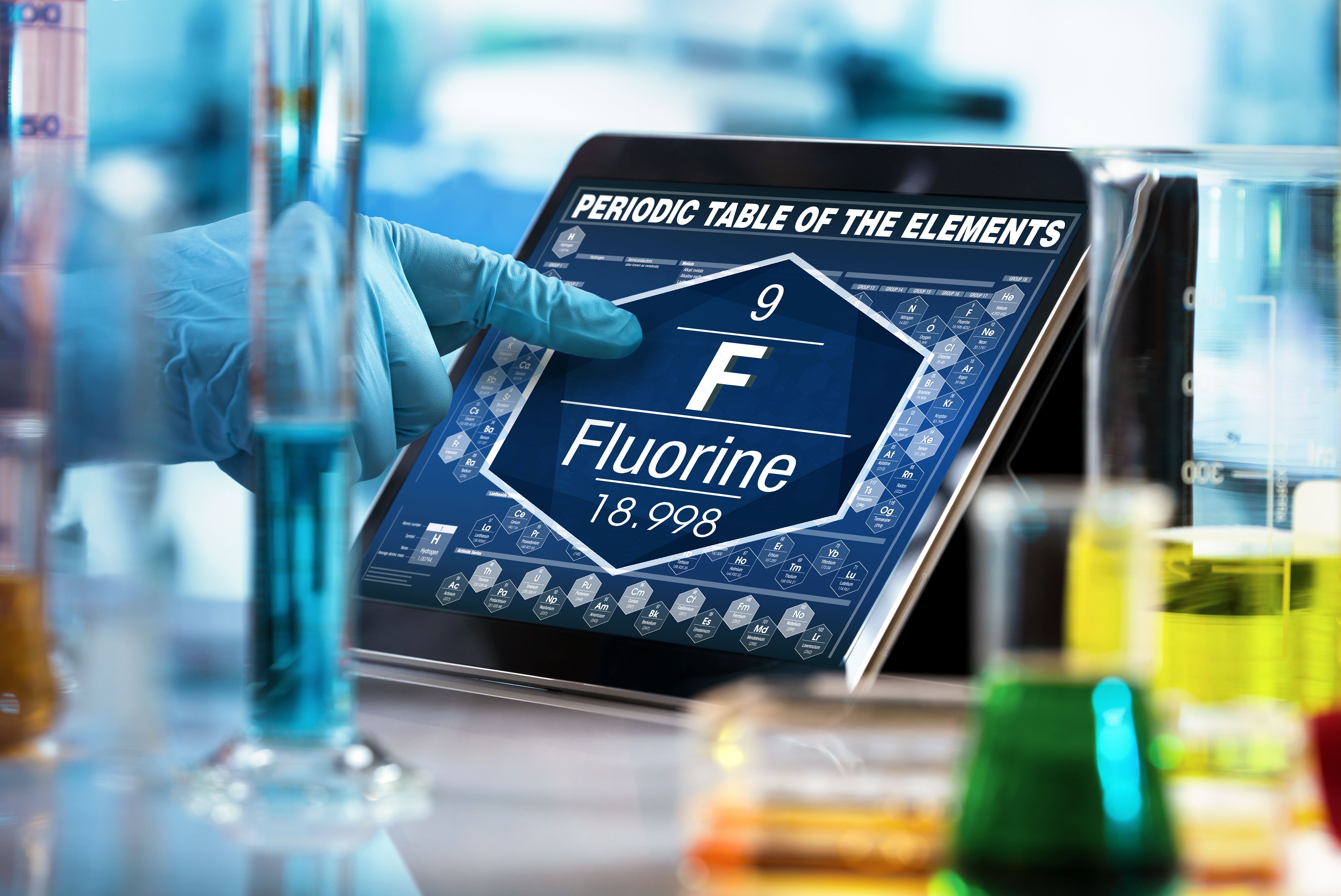Efficient Separation with Novel 3D Fluorinated Covalent Organic Frameworks
Researchers investigated a three-dimensional fluorinated covalent organic framework (3D-FCOF) as a stationary phase in capillary electrochromatography.
A recent study published in the Journal of Chromatography A shows how researchers introduced a new three-dimensional fluorinated covalent organic framework (3D FCOF), JUC-515, as a stationary phase in capillary electrochromatography (1). This framework resulted in the fluoroqinolones (FQs) having better separation capabilities.
scientist consulting on the digital tablet data of the chemical element Fluorine F / researcher working on the computer with the periodic table of elements | Image Credit: © angellodeco

The research team used tetra (4-aminophenyl)methane (TAM) and 2,3,5,6-tetrafluoroterephthalol (TFA) to synthesize JUC-515, which was subsequently coated onto the inner walls of a capillary column using chemical bonding (1). Comprehensive characterization confirmed the successful synthesis and integration of JUC-515 into the capillary column (1).
The researchers also investigated the impact of buffer solution concentration, organic additive content, and buffer solution pH on the separation efficiency of fluoroquinolones. This part of their study was designed to see if the JUC-515-coated capillary column exhibited resolution and reproducibility. The research team determined that this column did exhibit great resolution (>1.5). They also observed low relative standard deviations (RSDs) for various parameters, including retention time and peak area, demonstrating the high precision of the separation technique (1). The RSDs for intraday, interday, column-to-column, and interbatch precision were all found to be under 3.32% (1).
The researchers also demonstrated the longevity of the JUC-515-coated capillary column, as it maintained its separation performance after being used for more than 150 cycles (1).
One of the key aspects of this study was the elucidation of the separation mechanism based on fluorine interactions. By separating fluorinated β-phenylalanine analogs, β-phenylalanine, and trifluoromethyl β-phenylalanine analogs, the researchers provided insights into the role of fluorine interactions in the separation process (1). This understanding contributes to the broader knowledge of chromatographic separation mechanisms.
Reference
(1) Yin, H.; Zhen, Z.; Ning, W.; et al. Three-dimensional fluorinated covalent organic frameworks coated capillary for the separation of fluoroquinolones by capillary electrochromatography. J. Chromatogr. A. 2023, 1706, 464234. DOI: 10.1016/j.chroma.2023.464234
New Study Investigates Optimizing Extra-Column Band Broadening in Micro-flow Capillary LC
March 12th 2025Shimadzu Corporation and Vrije Universiteit Brussel researchers recently investigated how extra-column band broadening (ECBB) can be optimized in micro-flow capillary liquid chromatography.
A Review of the Latest Separation Science Research in PFAS Analysis
October 17th 2024This review aims to provide a summary of the most current analytical techniques and their applications in per- and polyfluoroalkyl substances (PFAS) research, contributing to the ongoing efforts to monitor and mitigate PFAS contamination.
Characterization of Product Related Variants in Therapeutic mAbs
October 15th 2024Navin Rauniyar and Xuemei Han of Tanvex Biopharma USA recently discussed how identifying product-related variants through characterization enables the recognition of impurities that compromise the quality and safety of drugs.

